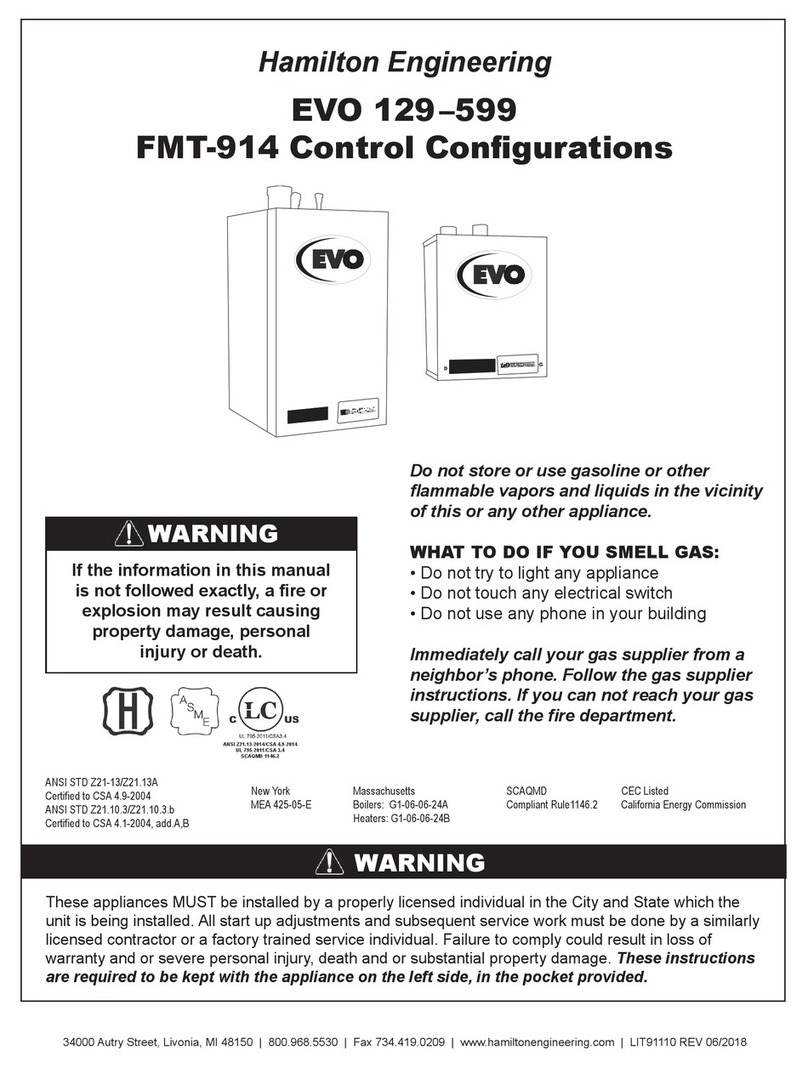
3
TABLE OF CONTENTS
TABLE OF CONTENTS
USING THIS MANUAL ..................................................... 2
TABLE OF CONTENTS ......................................................3
PART 1. GENERAL INFORMATION........................ 417
A. How it Operates.....................................................................4–7
B. Appliance Controls......................................................................8
C. Appliance Control Board (Bcb) Screens...................9–10
D. Cascade Display Functions...........................................11–13
E. Glossary.........................................................................................14
F. Dimensions..........................................................................15–16
G. Pre-Installation Requirements....................................16–17
H. Pressure ReliefValve...............................................................17
PART 2. ELECTRICAL .............................................. 1821
A. Electrical Connection/Requirements...............................18
B. Internal Wiring Connection..........................................18–21
PART 3. GAS CONNECTION...................................2227
A. Gas Connection and Inspection.........................................22
B. Gas Piping....................................................................................22
C. GasTables....................................................................................23
D. Gas Valve Setup................................................................23–24
E. Setting the Maximum Load........................................25–26
F. Setting the Minimum Load..................................................26
G. Gas Conversion..........................................................................27
PART 4. VENTING ................................................... 2838
A. ApprovedVenting Materials...............................................28
B. Venting theAppliance....................................................29–36
C. InletAirVent................................................................................37
D. Venting Runs that Exceed
Maximum Combined Length...............................................37
E. Condensate Requirements..................................................38
PART 5. PIPING........................................................ 3947
A. Hydronic Heating BoilerPiping..........................................39
B. BoilerSchematic Drawings..................................................40
C. Fill & Purge Heating System.................................................41
D. Water Heating Piping.............................................................42
E. Water Heating Schematic Drawings.......................43–47
PART 6. STARTUP PROCEDURES.....................4856
A. Items tobe CheckedBefore Lighting theAppliance.....48
B. Lighting Instructions......................................................48–49
C. Operating Instructions...........................................................49
D. INI Process and Service Procedures.......................49–51
E. Adjusting theTemp on the Appliance Display...52–53
F. Sequence of Operation..........................................................54
G. 0–10v Direct Control ....................................................54–55
H. Outdoor Reset Function........................................................56
PART 7. SERVICE AND MAINTENANCE ............5763
A. Servicing theAppliance..........................................................57
B. Placing theAppliance into Normal Operation.............57
C. Testing the Manual Reset High Limit.....................57–58
D. Soft Lockout Codes........................................................59–60
E. Appliance Hard Lockout Codes..........................................61
F. To Turn O Gas to the Appliance......................................62
G. Pump & Wiring Control.........................................................62
H. Status Readings........................................................................63
I. Appliance Sensor Resistance Table.................................63
PART 8. MAINTENANCE....................................... 6466
A. Periodic MaintenanceAnd Inspections.........................64
B. Annual Inspection....................................................................65
C. Heat ExchangerAnti-Scaling Prevention Feature...66
PART 9. SPECIAL INSTALLATION REQS........... 6768
A. Installation Requirements—Massachusetts..................67
B. Installation at HighAltitudes................................................68
PART 10. PARTS BREAKDOWN........................... 6971
PART 11. WARRANTY INFORMATION...................... 72
A. Warranty Contact Information.............................................72




























